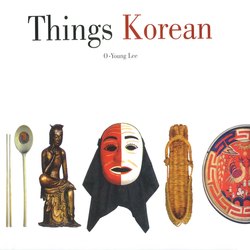Читать книгу Things Korean - O-Young Lee - Страница 23
На сайте Литреса книга снята с продажи.
ОглавлениеRice Chest, Heart of the Home
Duiju
Along with everything else, the image of the housewife has changed with modernization. If we picture our modern housewife near a sleek latest-model three-door refrigerator, we picture the housewife of the old days by the massive rice chest.
There is not the slightest trace of decoration on the rice chest. And we would never associate it with such modern concepts of design as "bright and cheerful" or "sleek" or "streamlined." Its occasional iron or brass fitting is not meant to make it more attractive—these fittings enhance the chest's qualities of gravity and durability. The structure of this rice chest, constructed from solid pieces of the strong pagoda tree, is depicted in bold, straight lines. The only word we could use to describe it is "dignified."
The Chinese characters in the Korean equivalent of the word dignified mean the object appears to be filled to the brim inside. We sense a substantial, weighty mass. There is nothing that fits this description better than the rice chest.
The ordinary rice chest is usually designed to store one sack of rice, but even when there is not a grain of rice in it one does not think of it as some vacant shell. It always looks chock full. There are always those four pillars at its corners which seem to be holding up a massive roof, as if this were some imposing religious edifice. These squat, solid heavy legs descend from the chest like the roots of a great tree. Instead of saying the rice chest has been put in a certain place, rather say the heavy thing has rooted there. While any other household item can be dismantled and moved around, the rice chest, no matter how little is inside, is of a ponderous weight which anchors it firmly to one spot. This quality renders the rice chest that same floating beauty one sees in a mountain rising above the mist.
The rice chest shares with the master of its house that stately unassailable dignity and moral character which reigns over the household. There is no less dignity in the ordinary one-sack rice chest than there is in that granddaddy of all rice chests of the early Chosun dynasty down in Cholla Province, which can hold seventy sacks. Any rice chest is the one source of grain for the household, and where it sits is the symbolic center of household affairs. It is an extension of the bountiful nurturing breast of mother, an assurance that all is basically well.
We associate the rice chest with the housewife, lifting open that heavy lid so many times from morning till night in providing for the family's nourishment. This mother of the old days wore no makeup or jewelry but, in her quiet dignity, had every strand of hair up neatly in place. Her heart was filled to bursting, with love for her family, and on that heart she kept an iron lock so that none of this love would be squandered. One sees in the heavy lock on the rice chest the same husbanding of nourishment against times of want.
While the English word risk comes from the Hebrew word for daily nourishment, the Korean's daily nourishment comes from the aesthetic of the rice chest.
